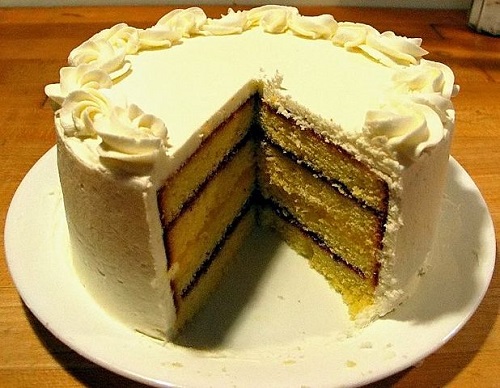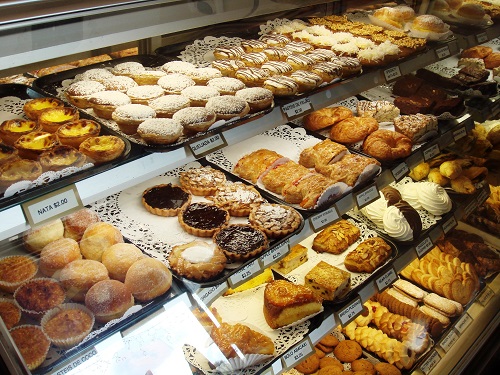Differences Between Cake and Pastry
Cakes and pastries are flour products that are prepared in our homes and other first food joints with the aim of unnourishing people’s hunger while at the same time providing them with sufficient nutrients. It is worth noting that many of us are an addict of wheat flour and sweet products, which explains our unending appetite and affinity for cakes and pastries. However, both cakes and pastries have some significant number of differences that are worth noting.
A cake is a product, which is made through the process of mixing wheat flour, sugar, eggs, oil, or sometimes butter. It is also worth noting that other recipes may be used depending on how the owner of the cake wants it to look like. Some people go to the extent of colouring their cakes concerning the occasion while other write their names on the cakes or the names to whom the cakes are dedicated.
-
What is a Pastry?
The pastry is a baked product that is made from wheat flour. Moreover, the pastry is a sweet dessert that is added solid fat to make more appealing at room temperatures. Pastries are cakes, but the differences arise in the usage of the words and the components used in preparing both products.
Differences Between Cake and Pastry
-
Recipe/Ingredients with Cake and Pastry
Ingredients and recipes form the fundamental difference between cakes and pastry. It is worth noting that methods constitute the written instructions or guidelines that stipulate how a particular dish ought to be prepared. Cake seems to include many ingredients and a complicated procedure for preparation. Some of the ingredients used in the preparation of cakes include wheat flour, sugar, eggs, milk, butter, and other decorating products. On the other hand, pastries do not constitute complicated methods of preparation and a large number of ingredients. The only products necessary for preparation of pastries include flour, water, and butter. This explains why many people prefer cakes to pastries.
-
Shapes and Flavor of Cake and Pastry
The other prevailing difference between cakes and pastries is the shape and flavor of the two wheat products. Cakes appear in different shapes while on average, pastries are likely to appear on a single and familiar shape. Some of the prevalent shapes that cakes are found include the round shapes, rectangular shapes, square shapes, and triangular shapes. On the other hand, pastries appear in a similar oval or round shape. Besides, cakes are available in different flavours, which may include vanilla, chocolate, and black forest among others. However, pastries do not have rich flavours, which make them not to be attractive to young children and the youthful population.
-
Decoration and Color of Cake and Pastry
Decoration and coloring are one of the leading factors that make food products to be attractive to the consumers and other buyers of a product. It is worth noting that cakes and pastries are decorated differently, and they are available in different colors. Cakes are significantly decorated and appear in different colors as compared to pastries which are not decorated either colored to attract consumers and other buyers of the wheat product. One of the methods of decorating cakes includes covering them with ice creams and other items like berries. Besides, bakers use food colors to prepare cakes with different colors, which make people to be attracted to the color of their choice. The food color is used in writing names and other features that may convey meaning to the consumers. On the other hand, pastries do not have any decoration neither do they have any colouring except the original golden brown.
-
Nutritional Composition in Cake and Pastry
Although the consumption of both pastries and cakes have been on the increase in the recent times due to the increased purchasing power of consumers, the two products have different nutritional composition. Cakes are considered to be very nutritious because they contain the majority of the nutrients needed in the human bodies while pastries contain a considerable number of nutrients. It is important to highlight that cakes are made of several ingredients, which include wheat flour, oil, eggs, milk, and sugar among others. This means that cake is a balanced diet because it has all class of nutrients ranging from carbohydrates, proteins, vitamins, and fatty acids. On the other hand, pastries contain sugars and fatty acids because they are prepared by use of wheat flour, water, and butter.
-
Consumption and Production of Cake and Pastry
Lastly, consumption and production of cakes and pastries vary concerning their usage and cultural meaning. Traditionally, cakes have been used in various celebrations like birthdays, weddings, marriage anniversaries and other merry events in the calendar of an individual. In addition, cakes are eaten while there is fun and are considered to be a luxury in many cultures. However, they are currently being produced commercially by different companies looking forward to reaping big from the increased number of people consuming cakes. On the other hand, pastries are common dishes in many societies. It is worth highlighting that many communities take pastries for breakfast and they are also considered when one is taking a soft drink. Currently, there is no large commercial production of bread.
Table Showing Differences Between Cakes and Pastries
| Cakes | Pastries | |
| Ingredients | Wheat, Sugar, Milk, Eggs etc. | Wheat, Water, and Butter |
| Shape and Flavor | All forms, Vanilla, Chocolate etc. | Oval shapes and Common Flavors |
| Decoration and Colors | Several Colors and Highly Decorated | No Decoration and Colors |
| Nutritional Composition | Proteins, Vitamins, Carbohydrates etc. | Carbohydrates and Fatty Acids |
| Consumption and Production | Used in events and Commercially produced | Commonly used for Breakfasts |
Summary of Cake and Pastry
- Cakes and pastries have been shown to have a huge number of differences, but they are made from the same foundation of wheat flour, which is the main dish and ingredient in their preparation.
- Besides, cakes and pastries are very similar, but their differences arise during their preparation where cakes have many ingredients hence making them more nutritious as compared to pastries, which are just made from wheat flour, water, and butter.
- The bottom line is that all pastries are cakes, but not all pastries are cakes. Moreover, it is important to highlight that pastries were invented to be consumed by people who are allergic to sugar, eggs, and milk and other ingredients.
- Difference Between Gross NPA and Net NPA - April 20, 2018
- Difference Between Job Description and Job Specification - April 13, 2018
- Difference Between Yoga and Power Yoga - April 10, 2018
Search DifferenceBetween.net :
Leave a Response
References :
[0]Akintayo, E. T. "Characteristics and composition of Parkia biglobbossa and Jatropha curcas oils and cakes." Bioresource technology 92.3 (2004): 307-310.
[1]Gassenmeier, Klaus, and Peter Schieberle. "Comparison of important odorants in puff-pastries prepared with butter or margarine." LWT-Food Science and Technology 27.3 (1994): 282-288.
[2]Vazirian, Mahdi, et al. "Antimicrobial activity of lemongrass (Cymbopogon citratus (DC) Stapf.) essential oil against food-borne pathogens added to cream-filled cakes and pastries." Journal of essential oil research 24.6 (2012): 579-582.
[3]"Image Credit: https://en.wikipedia.org/wiki/File:Pound_layer_cake.jpg"
[4]"Image Credit: http://teamwyomingportuguese.wikispaces.com/portuguese+cuisine"


